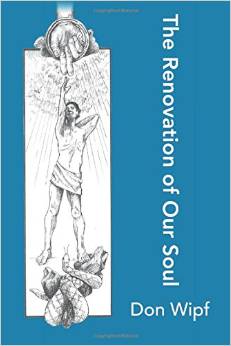It has been some time since I posted this aspect of the Christmas story but I think it bears repeating.
Tradition tells us Jesus was born in a stable. Just look at all the nativity scenes. I thought the same until a few years ago. That was when David Searcy, my stepbrother who has been a missionary in Indonesia for many years, sent me an email that sheds a different light on this aspect of the Christmas story. What follows is an edited version of his email.
Jesus was not born in a stable and there are at least three reasons why he was not.
First, in the Orient there is a huge tradition of hospitality, particularly for anyone with family connections. From David’s experience in Indonesia, even today whenever someone visits another village, the first question is: “Who are we related to in this village?” Then the visitors will go stay with those relatives. People track “relations” much further back than we do in the western world. They generally go back 4-5 generations.
So when Joseph and Mary went to Bethlehem, they did not go to a commercial inn. That would be insulting to the family. They went to a family connection because they were the decedents of David and in the city of David, a city full of their blood relatives – on both sides.
Second, Jesus’ birth in a stable is never mentioned in the Bible. What is mentioned is the fact that Jesus was laid in a manger – a feed trough for a donkey or cow. This fact is repeated three times in Luke chapter 2 verses 7, 12 and 16. People take the fact that Jesus was placed in a manger (which we generally believe would only be found in a stable) and that there was no room in the inn and conclude Jesus was born in a stable. As Luke 2:4 says: “And she gave birth to her firstborn son and wrapped him in swaddling cloths and laid him in a manger, because there was no place for them in the inn”.
Now the English Standard Versison, when referring to the word translated as the “inn”, states that another translation could be “guest room”. The Bible in Basic English translates “inn” as the “house”. Young’s Literal Translation translates “inn” as “guest chamber”. Most of the other translations use the word “inn”.
Third, there is evidence that houses at that time were laid out a bit differently than we think of them now. Think of a house in a long rectangle. On one end of the house were the sleeping rooms. One of these rooms was called the “inn or guest chamber”. This room was a special guest room for all the visiting family members. Hospitality was so important they had a special room. Then the middle part of the rectangle was a combination kitchen, dining room, work room, family room etc. This was the room where the main activities of the household took place. This was a busy place with kids, mom and dad, aunts and uncles, grandparents and various animals all together in one household. There was an open fireplace with smoke, soot, firewood, water jars and lots of other litter from – food prep, wood working, basket weaving, cloth weaving etc. It is most likely some of the family members actually also slept in this room.
This “kitchen” area was connected to the third section of the house–a stable. This is where the family donkey, cow, chickens and other animals were brought in at night for safe keeping. Between the kitchen and stable there would most likely be a barrier but not always a solid wall, and it is logical to think of that barrier as also being the manger, a feed box for the animals. Remember the people in Europe also did something similar – cows downstairs and people on the second story for heat and economy of work.
So Mary and Joseph arrive in a Bethlehem crowded with tired disgruntled people forced to come sign up for the tax rolls. Every household was full of relatives near and distant. Mary and Joseph were of the younger generation so did not get the better accommodations – the “inn” or guest room. It was full of older more deserving relatives. Mary and Joseph were billeted in the “kitchen” with all the younger cousins and other less prestigious crowd. It was a full house and everybody was enjoying catching up on the family gossip. A very pregnant and very tired Mary was quietly resting in a corner – content to finally be still and dry and in the company of “family”.
Given the crowded house, where did they place Jesus when he was born? Well, here was this empty feed box, a manger. Some fresh hay was found in the stable and the baby was placed on this bed of hay. A curious arrangement that the ladies in Bethlehem most likely laughed about for years to come.
I think the picture we have of Mary and Joseph alone in a stable is not culturally correct. They were in a house full of Oriental people with a strong sense of family and hospitality. The manger was one of necessity because the house was so full. It was indeed a lowly circumstance but I would not think that it was lonely.
But knowing exactly where Jesus was born is not a major issue at Christmas. The major story is the fact that he came to our world to save us from our sins. However, this topic of where he was born would make for an interesting discussion around the Christmas dinner table—for some a welcomed break from all the talk about football.

